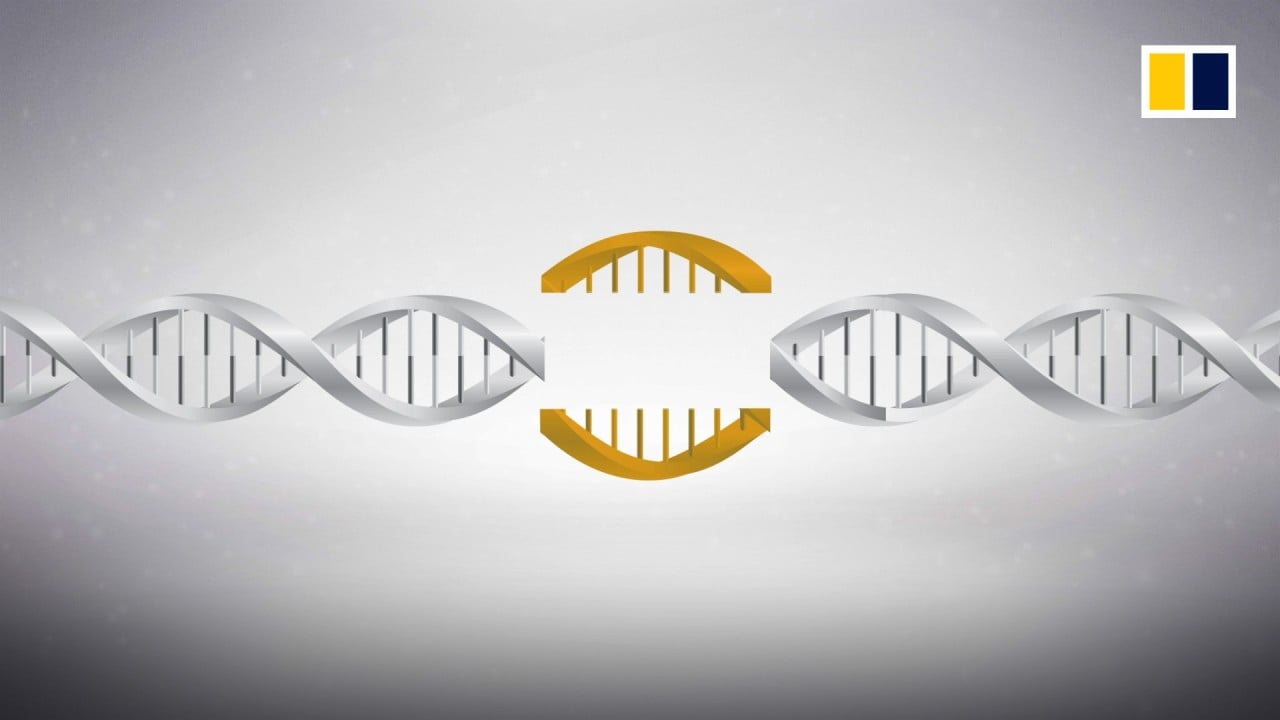
Chinese scientists say ‘Midas’ touch helps to fine-tune CRISPR gene editing
- Newly devised method ‘robustly and significantly increased’ gene-editing efficiency, CAS researchers say
- Technique could be applied to improve efficiency of diverse CRISPR-Cas systems, team says in recently published paper
The method, called Improving Editing Activity by Synergistic Engineering, or Midas, “robustly and significantly increased” the human gene-editing efficiency of three tools they used, the researchers said.
Moreover, based on Midas, the researchers found new genome editing tools that had higher efficiency and “very low” off-target effects.
The study by researchers from the Chinese Academy of Sciences (CAS) was published in mainland peer-reviewed journal The Innovation late last month.
The technique aims for a wide range of applications, including in treating genetic or acquired diseases, diagnostic testing, and increasing yields and improving the nutrition of agricultural products.
What is gene editing? Who’s doing it? And is it right?
“Genome editing is one of the most cutting-edge technologies at present,” said Wang Kejian at the China National Rice Research Institute.
“It has a very broad application prospect,” said Wang, who is researching gene editing but was not involved in the Innovation study.
The first genome editing technologies were developed in the late 1900s. Since then, several approaches have been devised, the most recent and well-known one being CRISPR, or “clustered regularly interspaced short palindromic repeats” – a natural defence mechanism that allows bacterial cells to detect and destroy the viruses that attack them.
Different types of CRISPR-associated systems have been discovered, but the most widely used is the CRISPR-Cas9 – where Cas stands for “CRISPR-associated” protein – an enzyme that cuts the two strands of DNA in the genome so it can be rewritten.
The US National Institutes of Health described the CRISPR-Cas9 system as “faster, cheaper, more accurate, and more efficient than other existing genome editing methods”.
Gene-editing scandal doctor’s methods work fine on monkeys: study
However, most of the newly discovered CRISPR-Cas systems showed poor gene-editing activity in human cells, which limited their widespread use, the study said.
The Chinese researchers found Cas12i, a recently discovered CRISPR-Cas system, had good potential for application because of its smaller size and single RNA structure.
They engineered a Cas12i variant with Midas – the Cas12iMax – which showed robust activity and higher efficiency compared to currently widely used genome editing tools, the researchers said.
They then further designed a high-fidelity version of Cas12iMax, or Cas12iHiFi, to minimise “off-target effects” – which lead to changes in the DNA in regions other than the targeted sites.
“Cas12iHiFi exhibited very low off-target effects and maintained nearly 90 per cent on-target activity,” the researchers said in a statement on the academy website.
The study found that the Midas-engineered variants had a gene-editing efficiency of up to 52 per cent, while other variants performed poorly – with an efficiency of less than 15 per cent.
The results showed Midas could be applied to improve the gene-editing efficiency of Cas nucleases from diverse CRISPR-Cas systems, the study concluded.
“We believe that high-fidelity Cas12iMax offers minimised off-target effects for applications that need high specificity, especially in the biomedical field,” the researchers said in their report.
CRISPR-Cas9 has been reported to have a slightly higher cutting efficiency than Cas12, though the technology can also create off-target effects.
“Cas9 is the best ‘scissor’ at present. Other ‘scissors’ have some disadvantages, such as low efficiency,” Wang said.
“Researching on CRISPR-Cas systems can enrich our toolbox so that we will have more ‘scissors’. Also, from the domestic point of view, it can also prevent the monopolisation of intellectual property rights by one unit.”

He, who had claimed to be the first person to use CRISPR-Cas 9 to create gene-edited HIV-resistant babies, was found guilty in 2019 of “illegal medical practice” and sentenced to prison. He was released in April after serving a three-year term.


